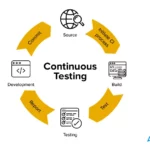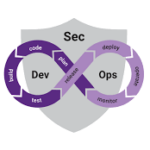
A New Era of Software Scalability
In today’s rapidly evolving tech landscape, the ability to scale seamlessly can make or break a digital product. From startups experimenting with their first MVP to tech giants serving millions of users globally, scalability is non-negotiable. As applications grow more complex and user demands fluctuate wildly, traditional infrastructure methods simply can’t keep up.
Enter containerization and Kubernetes—two technologies that have redefined how we build, deploy, and scale applications. Together, they’re not just tools; they’re a mindset shift. They bring agility, resilience, and automation to the core of DevOps practices, empowering organizations to innovate and adapt faster than ever.
What Is Containerization? Encapsulating Applications for Speed and Portability
Imagine if every time you shipped an application, it came neatly packaged with everything it needs to run—libraries, dependencies, configuration files, and runtime. That’s exactly what containerization offers.
Containerization is the process of bundling an application and its environment into a single, portable unit known as a container. These containers are lightweight, start almost instantly, and can run consistently across any system that supports container runtimes like Docker, containerd, or CRI-O.
🔍 Key Benefits of Containerization:
- Portability: Write code once, run anywhere—across dev, test, and production.
- Consistency: No more “it works on my machine” issues.
- Efficiency: Containers share the host OS kernel, making them lighter and faster than VMs.
- Isolation: Each container runs independently, enhancing security and reliability.
For DevOps teams, this means faster development cycles, fewer deployment headaches, and easier environment management—especially in a multi-cloud or hybrid setup.
Kubernetes: The Intelligent Orchestrator
While containers simplify deployment, managing hundreds or thousands of them across clusters is a whole different ball game. That’s where Kubernetes (or K8s) comes in.
Kubernetes is an open-source container orchestration platform that automates the deployment, scaling, management, and networking of containerized applications. Developed by Google and now maintained by the CNCF, Kubernetes takes care of the heavy lifting—so DevOps teams can focus on delivering features, not fixing infrastructure.
💡 What Kubernetes Does:
- Orchestrates containers across a cluster of machines.
- Self-heals by restarting failed containers and rescheduling them on healthy nodes.
- Balances loads across containers and ensures high availability.
- Automatically scales applications up or down based on demand.
- Facilitates service discovery, rollouts, and rollbacks with ease.
In short, Kubernetes is the brain that keeps containerized applications running smoothly—even under pressure.
Why This Duo Is the Backbone of Scalable DevOps
⚙️ Seamless Elasticity: Scale Without Breaking a Sweat
Need to scale up during a product launch? Or scale down during low-traffic hours? Kubernetes makes this process automatic and intelligent. It adjusts the number of running containers in real-time based on CPU/memory usage or custom metrics—delivering the performance your users expect without overprovisioning resources.
🧱 Microservices at Scale
Containerization is a natural fit for microservices architecture, where each component of an application runs independently. Kubernetes excels in managing these independent services, ensuring they communicate securely, scale independently, and recover quickly from failures. This promotes agility and modularity—two key pillars of DevOps.
🔁 Effortless CI/CD Integration
Containerized environments eliminate inconsistencies, while Kubernetes supports strategies like blue-green deployments, canary releases, and automated rollbacks. Together, they strengthen CI/CD pipelines and drastically reduce deployment risks.
Imagine pushing code confidently multiple times a day—with minimal downtime and instant recovery if something goes wrong. That’s the DevOps dream, realized.
🔐 Enhanced Security and Isolation
Containers provide isolated environments for running applications, reducing the blast radius in case of a security breach. Kubernetes supports role-based access control (RBAC), network policies, and PodSecurity standards, ensuring you deploy securely and maintain compliance.
Real-World Examples: Where the Magic Happens
Organizations across industries are using containerization and Kubernetes to scale fearlessly and operate efficiently:
- Spotify uses Kubernetes to power its backend microservices and manage global audio delivery at scale.
- Airbnb adopted containers to streamline their CI/CD process and migrated to Kubernetes for better orchestration.
- The New York Times leverages Kubernetes for managing its complex publishing and media workflows.
- NASA’s Jet Propulsion Laboratory even uses Kubernetes to process telemetry data from space missions.
Whether it’s music streaming, hospitality, media, or space exploration—this duo is driving innovation across the board.
Best Practices for Harnessing the Power Duo
To truly unleash the potential of containerization and Kubernetes in your DevOps workflow, consider these battle-tested best practices:
- Design for failure: Build resilient systems that assume things will break—and let Kubernetes handle the recovery.
- Adopt declarative configurations: Use YAML files to define desired system states for version-controlled, repeatable deployments.
- Secure your containers: Regularly scan for vulnerabilities, use trusted base images, and implement network policies.
- Use namespaces and labels: Organize workloads logically to manage access, policies, and visibility more effectively.
- Leverage observability tools: Integrate Prometheus, Grafana, Fluentd, and Jaeger to monitor performance and trace issues.
The Road Ahead: Cloud-Native, Agile, and Unstoppable
Containerization and Kubernetes have reshaped how modern software is developed, deployed, and scaled. In a world demanding agility and high availability, they allow DevOps teams to respond faster to business needs, reduce downtime, and deliver better user experiences.
As cloud-native development continues to evolve, this dynamic duo will only grow in importance—ushering in a future where resilience, scalability, and speed are the default, not the exception.
If you’re building modern applications or planning a cloud migration, it’s time to invest in this winning combination. Containerization and Kubernetes are more than tools—they’re your ticket to unstoppable growth.
Follow us for more Updates













